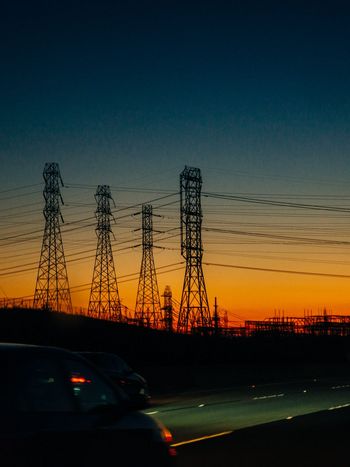Powering the Future with electrons and molecules: Sector Integration in the Netherlands
In the CIGRE strategy sector integration has been highlighted as a strategical building block for shaping the power system of the future. This article wants to share the importance of sector integration as an obvious strategy in the energy vision of the Netherlands, given the geographical and demographical situation of this country.
The Netherlands has set ambitious targets for reducing greenhouse gas emissions, as part of the country's Climate Agreement. The objective is to reduce greenhouse gas emissions by 55% by 2030 compared to the levels in 1990, and to achieve a 95% reduction in greenhouse gas emissions by 2050, compared to the same levels in 1990.
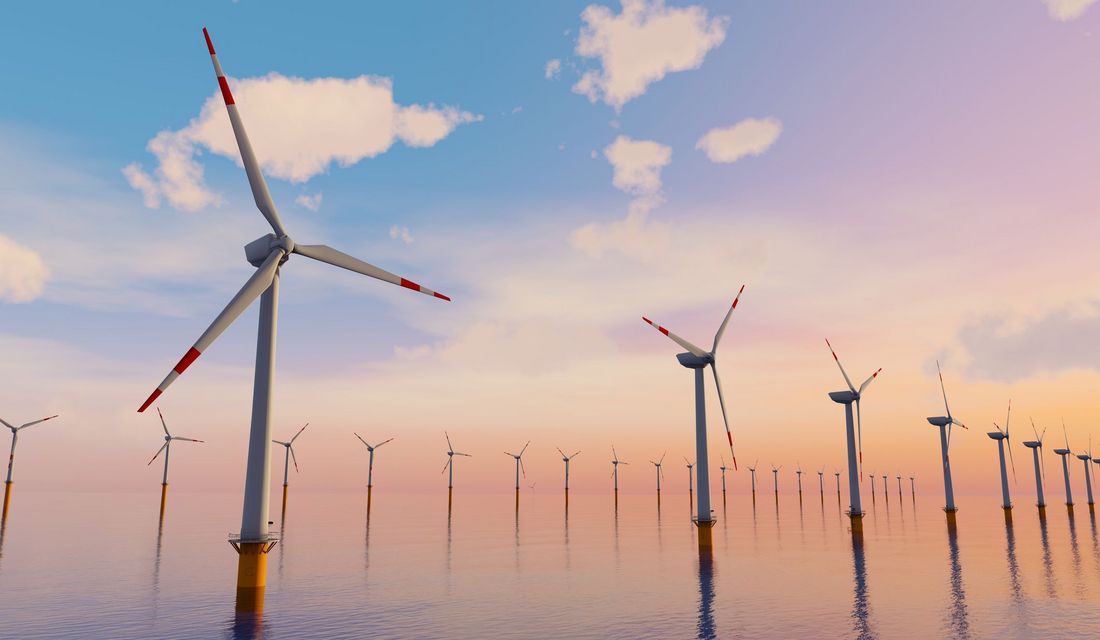

Chair CIGRE National Committee of the Netherlands
The unique geographical location of the country, with the North Sea on its doorstep, presents an excellent opportunity for achieving the targets of 48-92 GW wind production, 100-183 GW sun production, and 16-45 GW hydrogen production in 2050 via an integral connection of offshore and onshore energy infrastructure. However, production of offshore sustainable energy poses challenges for the transportation and distribution onshore due to the country's high population density.
Limited space for expansion of infrastructure
With a population density of around 508 people per square kilometre, making the Netherlands as one of the most densely populated countries in Europe, expansion of onshore infrastructure presents additional challenges as the existing infrastructures of electricity, gas, heat, and CO2 will not suffice. Next to expansion of these existing infrastructures, also new infrastructure must be constructed for hydrogen and EV charging.
Netbeheer Nederland's Integral Infrastructural Exploration 2030-2050 provides several scenarios that demonstrate, no matter which scenario, how the Dutch energy transition is an infrastructural energy transition, mainly driven by electrification and hydrogen (Figure 1).
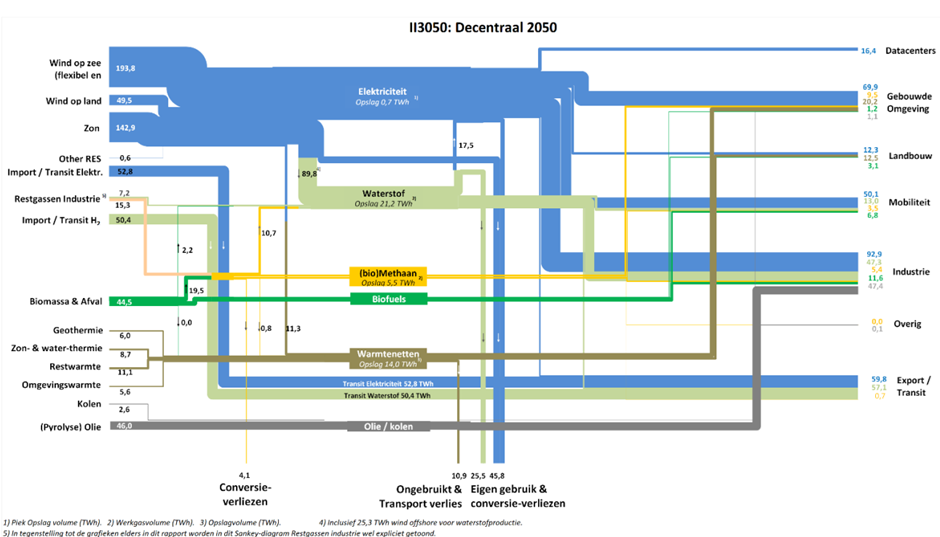
Figure 1 - Infrastructural driven energy transition [1]
Electrification alone will have a huge infrastructural impact, meaning that for transportation of renewable wind energy produced by approximately 1,700 wind turbines in 2030 multiple 380 kilovolt (kV) high-voltage stations must be built, each station being as large as twelve football fields. And by 2050, one in three streets in the Netherlands will be dug up to lay cables for green electricity, 50,000 new neighbourhood stations will be installed, and 100,000 kilometres of underground cables will be laid. To accommodate the conversion of renewable wind energy into hydrogen and transportation to the industrial clusters 1,200 kilometre of hydrogen infrastructure need to be built, although, due to the phase out of natural gas 85% of the existing gas infrastructure can be used for hydrogen transportation.
It goes without saying that sector integration of this magnitude must be coordinated, and this is done in the Multi-Year Infrastructure Energy and Climate Program, a national collaboration between the Dutch government, industry, DSOs and TSO.
Collaboration however doesn’t stop at the borders. To increase reliability of electricity supply interconnection capacity with the neighbouring countries like the UK, Belgium, Germany, Denmark, and Norway must increase two and a half to three and a half times (Figure 2).
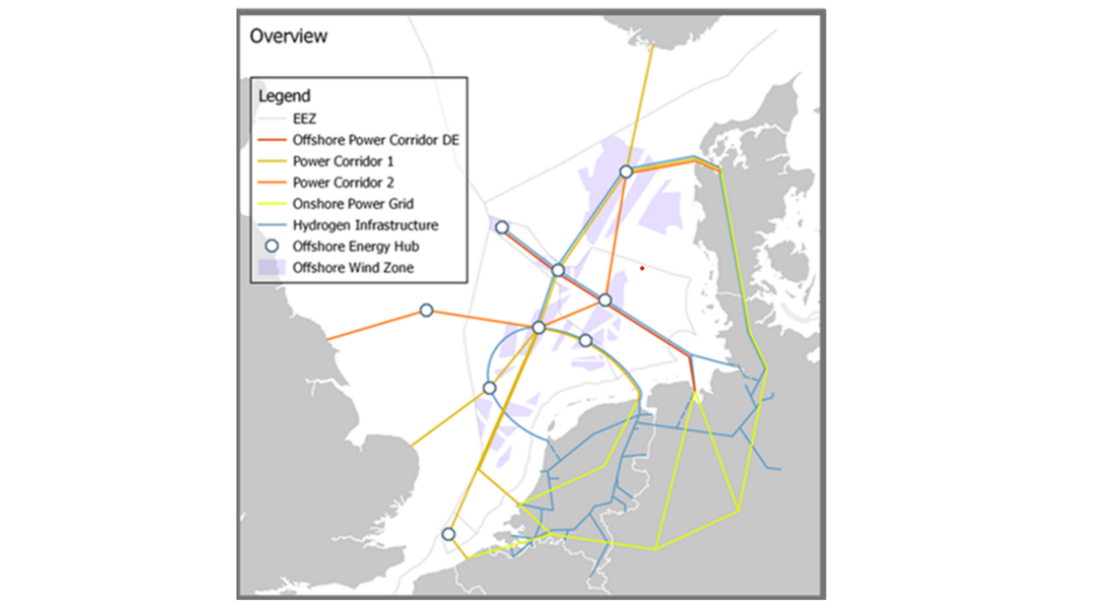
Figure 2 - Sector integration of wind, electricity and hydrogen offshore and onshore [1]
Moreover, sector integration brings efficiency, acceleration, and cost reduction as aimed for example in the plans for the Delta Rhine Corridor (Figure 3 brown route), which will connect the ports of Rotterdam and Antwerp to major industrial centres in the Netherlands, Belgium, and Germany with a 270-kilometre corridor for hydrogen- en CO₂ pipelines and 3 2GW DC cables to transport renewable offshore wind electricity.
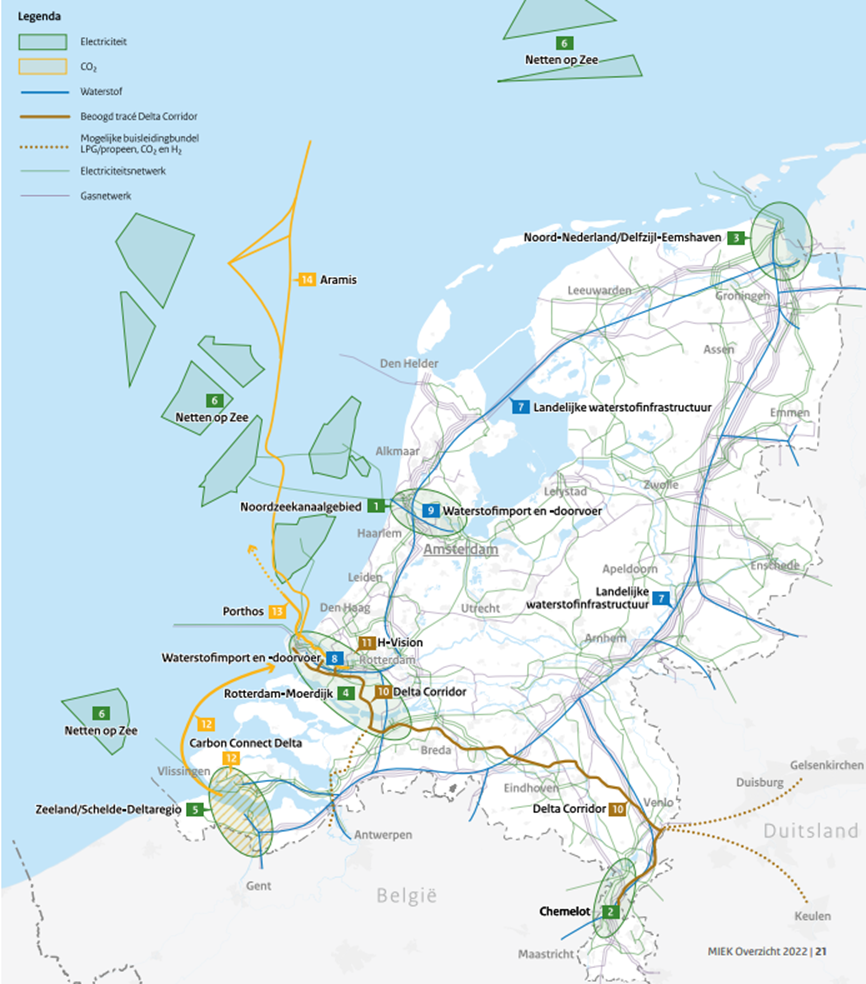
Figure 3 - Overview MIEK projects [2]
Demand-Supply of the industry: an indispensable piece of the puzzle
In 2021, 31% of the total amount of greenhouse gases in the Netherlands was emitted by industry and has been reduced from 53,6Mton in 2021 to 47,8 Mton in 2023. Within industry, the chemical industry is the largest polluter, with 29% of total industrial emissions.

Sector integration with the industry, especially in the chemical industry, plays a crucial role in the reduction of green house gases, in particular the demand-supply especially of the production of synthetic fuels using sustainable energy. Synthetic fuels are produced by reacting hydrogen with other molecules, commonly CO2. Limited manufacturing of synthetic products using sustainable energy leads to more structural transport of this sustainable electricity abroad. Thus, it requires considerably more electricity infrastructure. Additionally, clarification of demand-supply of synthetic products is also decisive for the future development of the CO2 infrastructure as a shift of the industry towards production of synthetic products would lead to a substantial demand and utilization of CO2. Storage of CO2 will become even more crucial. For example, the project Aramis alone will realise an annual storage of 5 CO2 Mton per year, with a further growth to 12 and ultimately 22 Mton per year. The CO2 network of the future (Figure 4) plays an important role in facilitating the CO2 reduction targets of the Dutch industry.
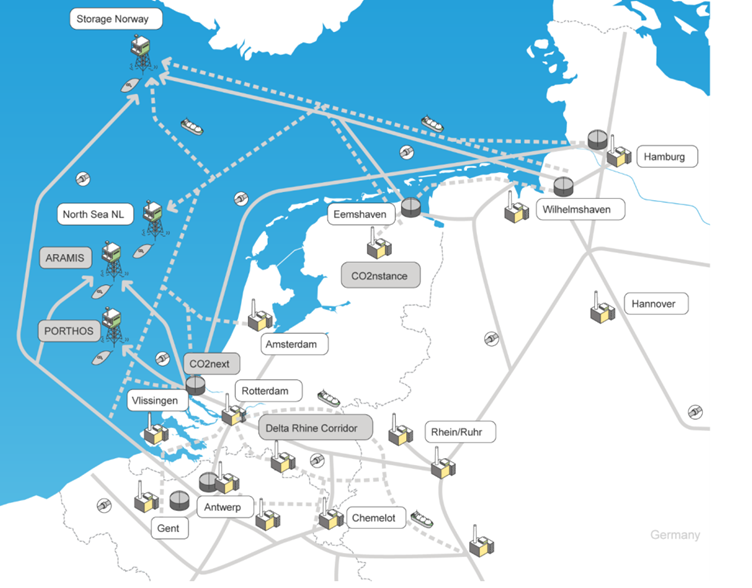
Figure 4 - CO2 infrastructure of the future [1]
Conclusion
The Dutch energy transition could not happen without sector integration and a coordinated approach of offshore and onshore infrastructural developments which need to be aligned between energy demand and supply stakeholders. In this jigsaw puzzle every piece needs to fit at the right time in the right place, nationally and internationally making it a transformation that is unprecedented.
References
- Netbeheer Nederland, Integral Infrastructural Exploration 2030-2050
- MIEK overview 2022
About the Author
In former leading roles in Eneco, a leading sustainable energy company in the Netherlands, Diana van den Heuvel shaped the energy liberalization. As a corporate account director in Siemens Energy, she leads the strategical development of key accounts in the energy transition. In her additional role as member of the Dutch Research Council, one of the most important science funding bodies in the Netherlands for quality and innovation she approves funding for innovation projects for SMEs.
As Chair of Women in Energy Netherlands and Chair of Women Engineers of the Royal Dutch Institute of Engineers she represents and promotes diversity and inclusion.
Banner & thumbnail credit: vice_and_virtue on iStock
